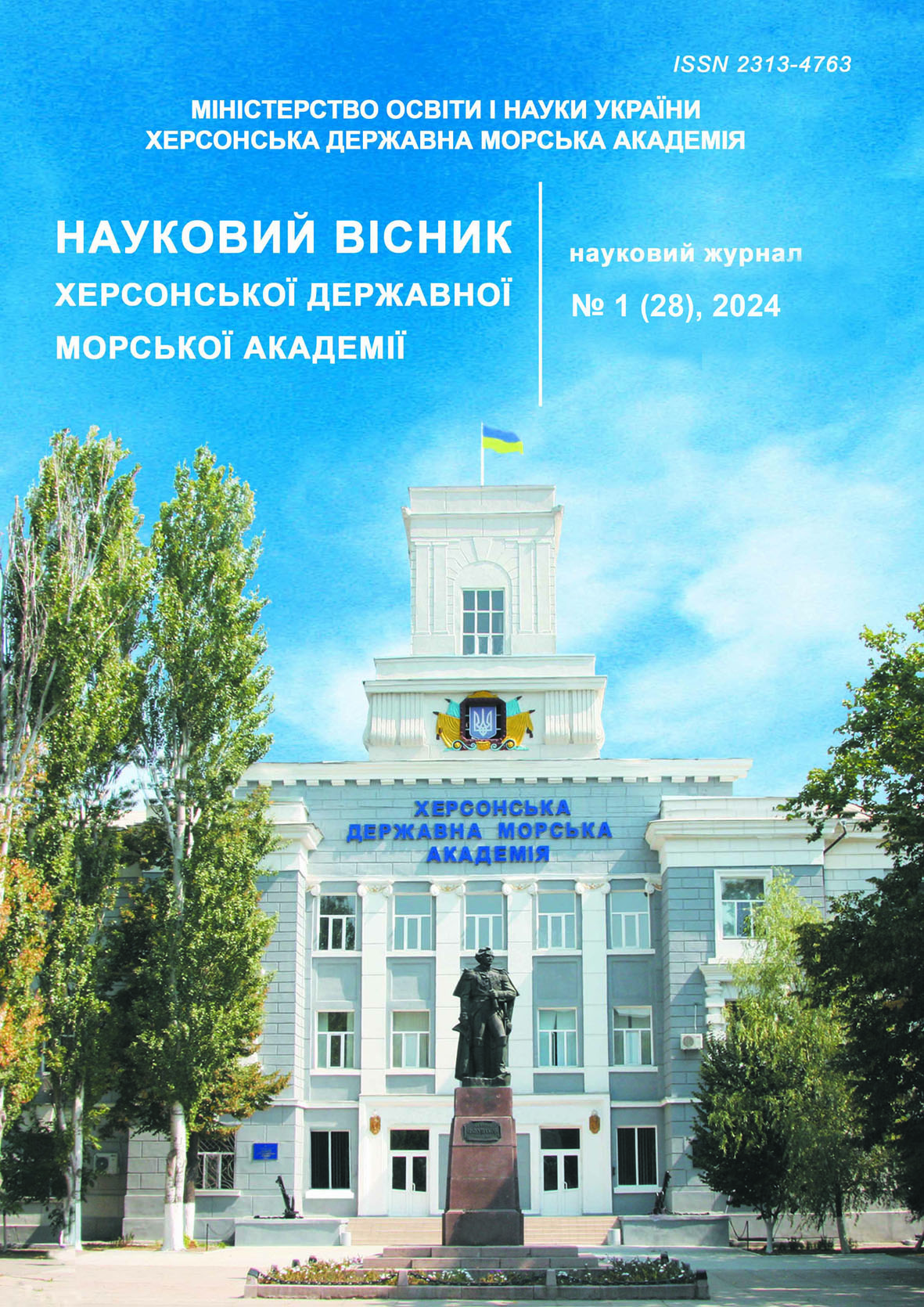MODEL OF A FOUR-PHASE TRAFFIC FLOW MANAGEMENT SYSTEM
https://doi.org/10.33815/2313-4763.2024.1.28.196-204
Abstract
The article presents the development of a mathematical model of a special traffic light signaling control system of a road intersection of the city's transport network.
One of the problems of urban intersections in the case of strict management is such a parameter as the number of vehicles that manage to pass during the time when the permitted traffic light signal is burning. This parameter is important for the efficiency of the traffic light. This parameter can be critical in urban environments, where a large number of cars can create traffic jams if the time dedicated to traffic is not sufficient to accommodate all vehicles. The essence of the system is to determine the main parameters of the traffic light modes depending on the pre-established criteria. As such criteria, the following are accepted in the work: 1) the minimum passing capacity of the approaches to the intersection, which is determined by the number of vehicles that can pass during the time of the permitted traffic light signal - and this value is generalized for all approaches; 2) the maximum loading of the intersection, which is determined by the number of vehicles accumulating during the burning of the prohibited traffic signal, which is also generalized for all approaches. These explanations are suitable for use at any intersections for which it is necessary to adjust the specified two parameters in order to improve the traffic situation, namely for cases when the traffic light control parameters set by default at a certain intersection do not correspond to the existing intensity of traffic flow, as well as for cases when, under the available parameters, there is excessive accumulation on one or several approaches of vehicles, that is, it leads to traffic jams. This model is proposed for x-shaped intersections with an installed 4-phase traffic light control system. Such a management model will allow solving two important problems of the intersection - inadequate bandwidth and reducing congestion.
References
2. Polishchuk, V. P. (2014). Organization and regulation of road traffic / by. general ed. V. P. Polishchuk; O. O. Bakulich, O. P. Dzyuba, V. I. Yeresov and others. K., 467 p.
3. Slavich, V. P., Derbedenev, A. V. (2019). The model of traffic jam functioning and determination of the time to overcome it // Bulletin of KhNTU. 2019. No. 2(69). P. 169–173.
4. Slavich, V. P. (2014). A model for determining the length of a queue of vehicles with given parameters of traffic light regulation // Problems of information technologies. No. 02(016). P. 122–124.
5. Slavich, V. P., Livandovskyi, V. S. (2021). A model of the traffic light pedestrian signaling control system // Communal management of the city. Vol. 6, No. 166. P. 227–231.
6. Trushevskyi, V. E. (2014). Peculiarities of the correction of elements of the cycle of traffic light regulation in order to guarantee the safety of pedestrian traffic / V. E. Trushevskyi, S. V. Hrytsai // Highway of Ukraine. No. 5. P. 20–22.
7. Fornalchyk, E. Y. (2014). Technical and technological analysis of regulated intersections with main streets / E. Yu. Fornalchyk, V. V. Gilevich // Scientific notes: interuniversity collection. – Lutsk: LNTU, No. 46. P. 558–564.
8. Shevchenko, V. V. (2022). Justification of the effective direction of the development of traffic light control systems with rigid regulation cycles // Bulletin of Machine Engineering and Transport, Volume 16. No. 2. pp. 110–119.
9. Farzaneh, M. (2005). Modeling traffic dispersion / M. Farzaneh, H. Rakha / Virginia Polytechnic Institute and State University. November. 139 p.
10. Sacks, G. (2009). Impact of front-of-pack ‘traffic-light’nutrition labelling on consumer food purchases in the UK / G. Sacks, M. Rayner, B. Swinburn // Health promotion international. 2009. Vol. 24, Issue 4. P. 344–352.
11. Tubaishat, M. (2007). Adaptive traffic light control with wireless sensor networks / M. Tubaishat, Y. Shang, H. Shi // Proceedings of IEEE Consumer Communications and Networking Conference, 2007. P. 187–191.
12. Zabyshnyi, Y. O. (2016). Influence of exhaust for air condition in cities / Y. O. Zabyshnyi, Y. M. Semchuk, V. M. Melnyk, B. V. Dolishniy // The scientific heritage. Hungary, VOL 1, No 3 (3) (2016). P. 28–34.
13. Yu. L. (1999). Real-Time Calibration of Platoon Dispersion Model to Optimize the Coordinated Traffic Signal Timing in ATMS Networks / L. Yu. – Texas, Texas Southern University. 51.
14. Fornalchyk, Ye. (2013). The saturation flow volume as a function of the intersection passing speed / Ye. Fornalchyk, I. Mohyla, V. Hilevych // International Scientific Journal «Transport Problems». Vol. 8. Issue 3. pp. 43–51.
15. Fornalchyk, Ye. (2015). The influence of dynamic characteristics of vehicles on the passenger car equivalent and traffic delay / Ye. Fornalchyk, I. Mohyla, V. Hilevych // An International Quarterly Journal «ECONTECHMOD». Vol. 4. No. 2. pp. 45–50.






